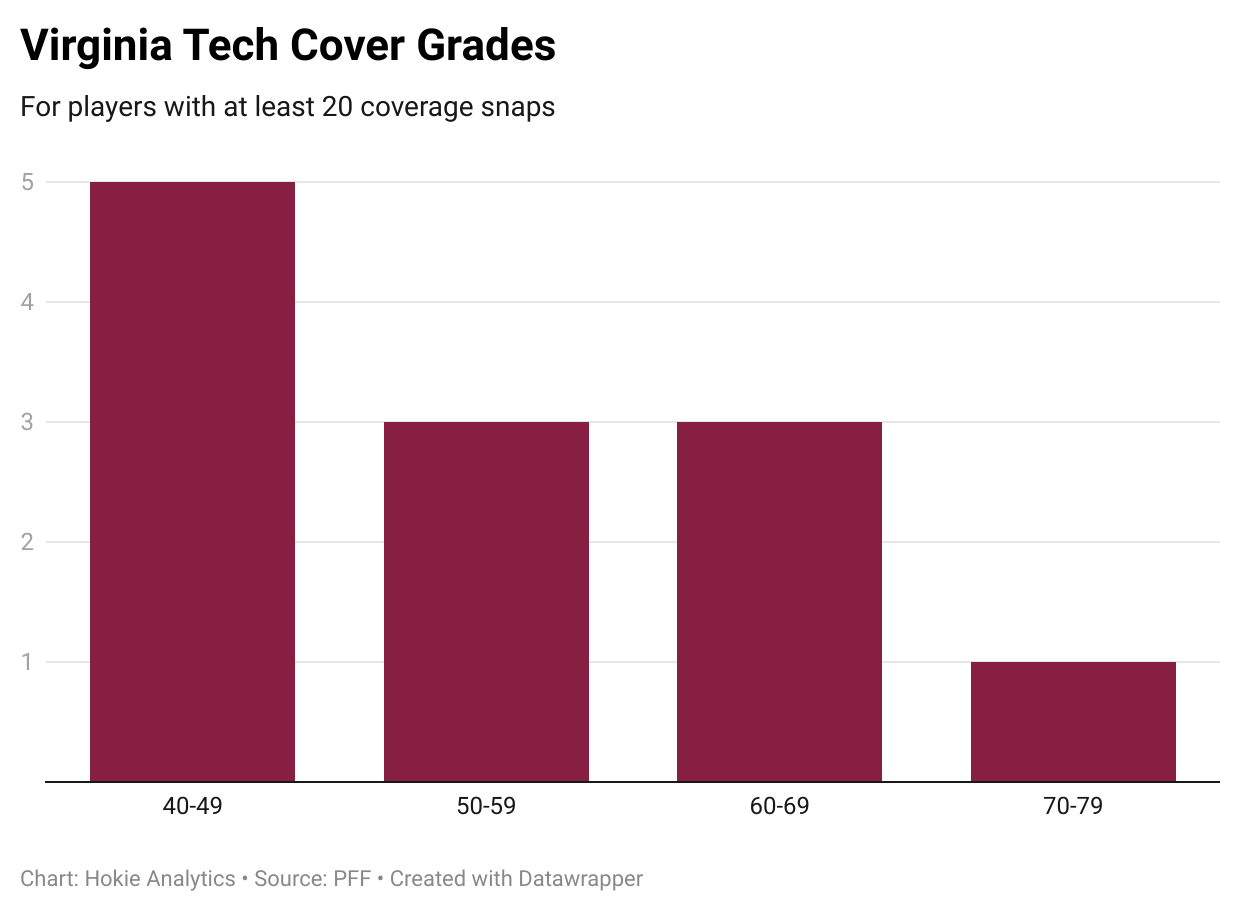There is no quantifiable reason why Virginia Tech should be as bad as they have shown themselves to be so far in 2025.
The team definitely has personnel holes - notably along the offensive line and at linebacker - but it had similar holes in previous years and lacked the depth we have seen this year, yet still managed to win six regular season games.
In 2025, the second stringers have played nearly to the level of the starters, which would be great were it not for the fact that the starters have been horrible.
Changing the offensive and defensive schemes entering year four was far from ideal, but with so many incoming transfers it boggles the mind that the team couldn’t find players who fit the new schemes, especially on defense.
In short, I don’t think this Virginia Tech team is as bad as they have played lately. Rather, I think the version that played the first half against Vanderbilt is probably the closest we have seen thus far of median 2025 Virginia Tech,
Offense
It all went south for the Hokies when left tackle Johnny Garrett exited the Vanderbilt game with an injury. His absence, along with that of right guard Montavious Cunningham, has forced a host of young linemen to play before they are ready.
And yet, Garrett was not having a good year. His PFF grade was an atrocious 52.8. Cunningham was worse at 46.9.
So how did replacing bad linemen with young bad linemen completely tank the Hokies’ season?
It didn’t.
The team couldn’t pass block before the injuries, and it has gotten marginally worse with all the freshmen playing up front.
The big change came in the run/pass ratio. At a high level, though, it’s difficult to detect a major shift:
vs. South Carolina: 37 runs, 35 passes (51% run)
vs. Vanderbilt: 31 runs, 29 passes (52% run)
vs. Old Dominion: 34 runs, 39 passes (47% run)
However, sacks and scrambles go down on the stat sheet as runs, so let’s look at drop backs for Kyron Drones:
vs. South Carolina: 41 drop backs out of 72 plays (57% pass plays)
vs. Vanderbilt: 36 drop backs out of 60 plays (60% pass plays)
vs. Old Dominion: 53 drop backs out of 73 plays (73% pass plays)
As a play caller, Philip Montgomery appears to favor a roughly 50/50 share of rushing calls to passing calls when the game is close. Once the game gets out of hand and the Hokies find themselves down by more than one score, he has to throw a lot more. Consider the following count of minutes during which the Hokies have been leading or within one score:
vs. South Carolina: leading or within one score for 48 minutes (3.2 quarters)
vs. Vanderbilt: leading or within one score for 50 minutes (3.3 quarters)
vs. Old Dominion: leading or within one score for 17.5 minutes (1.2 quarters)
True to form, Montgomery has not asked Drones to keep the ball on designed QB carries more than 9 times in a game this year.
The running backs have had their moments, but the scoreboard has rendered them non-entities for 36% of the season - the amount of game time during which the Hokies have trailed by more than one touchdown.
Don’t get me wrong, the Tech offense is not good. But we knew it wouldn’t be good - not with so little experience up front.
The fixable problem lies on the other side of the ball.
Defense
Raise your hand if you had the secondary pegged before the season as the biggest trouble spot on the team.
Yeah, I don’t think anyone saw that coming.
Through the first three games of the season, the Virginia Tech defense as a whole has a 42.9 coverage grade and has allowed opposing quarterbacks to complete 71.2% of their passes.
As bad as the offensive line has been, both pass blocking and run blocking have graded out above 50.
Only four players with at least 20 coverage snaps have graded out above 60:
Quentin Reddish (S) - 77.4
Isaiah Brown-Murray (CB) - 64.3
Christian Ellis (NB) - 62.1
Thomas Williams (CB) - 61.2
Caleb Brown (41.7) and the recently departed Dante Lovett (44.8) saw their snaps drastically reduced because of their struggles.
That would be the case with other players too if their backups were not equally bad against the pass.

Unfortunately, there have been no good options at linebacker, nickel, or safety, where every player in the rotation has been atrocious in coverage.
Take linebacker, for instance. Caleb Woodson. His coverage grade is 53.2, and he has allowed 5 completions on 6 attempts.
The Jaden Keller/Michael Short combination has been even worse. Both have coverage grades below 50, and combined they have allowed 8 completions in 9 attempts.
Is it a Sam Siefkes thing? Nope.
Woodson (50.6) and Keller (53.6) were terrible in coverage last year, too.
Short had a better grade last year at North Carolina (71.1), but most of that came against Boston College and UConn late in the season, and he still allowed two catches on three targets overall.
Can anything be done?
Brent Pry was fired because he wasn’t able to elevate recruiting.
The main reason he failed to improve the talent level was that Virginia Tech’s poor football operation (management structure) could not compete against peer programs.
That is how the Hokies ended up with a roster full of G5 and FCS transfers. Tech looked big time compared to where they came from.
Now we’re seeing that for many of those players, the adjustment to P4 football is not immediate.
In order to post a respectable showing the rest of the way, Sam Siefkes needs to fix the coverage problems in the secondary.
At least in theory, those players, who had had some success before transferring to Virginia Tech, are capable of adjusting to the speed of the game at the P4 level and showing improved play as the season progresses.
The first step to winning games is getting stops on third and long, and there is no time like the present to make strides in that direction.



